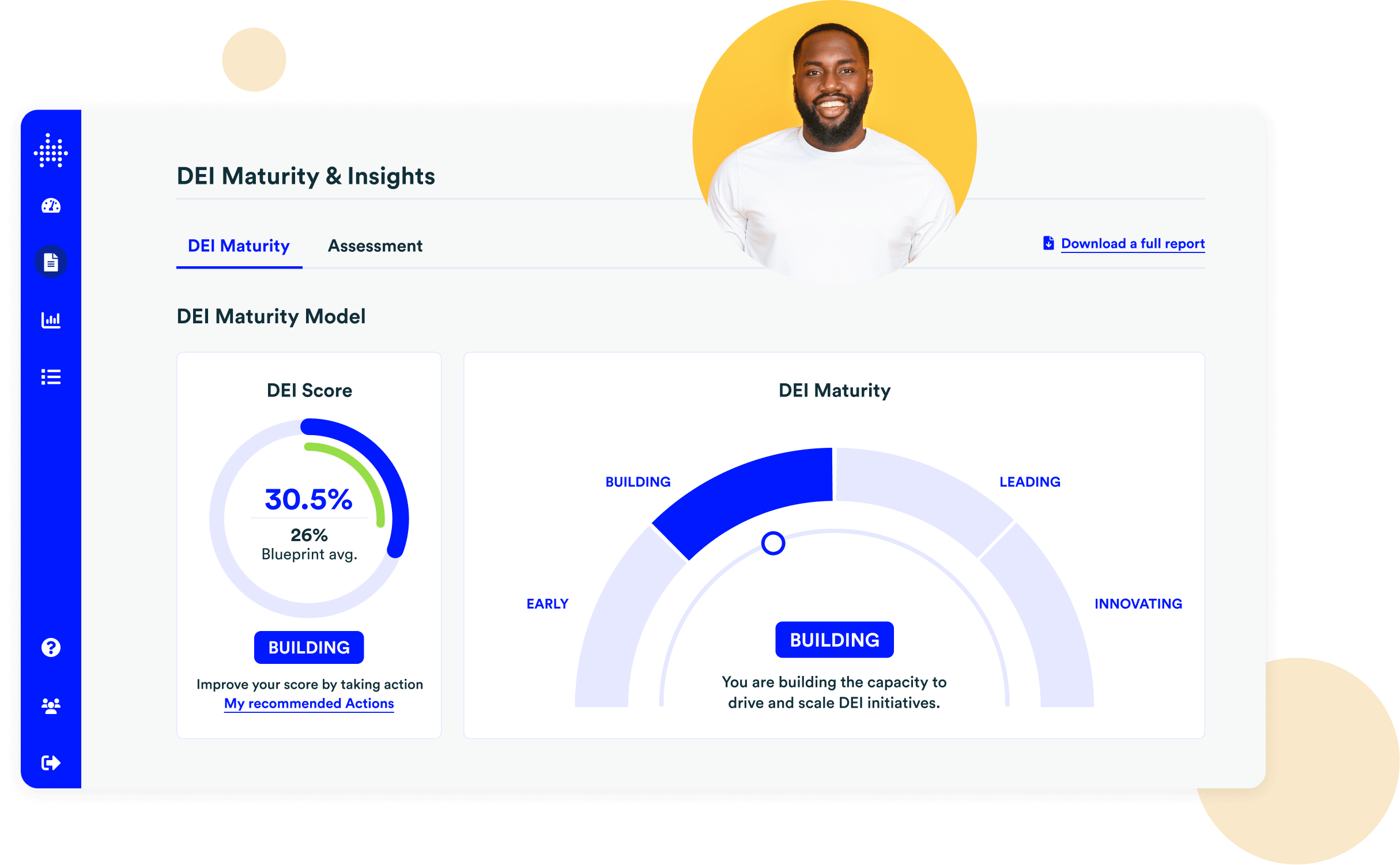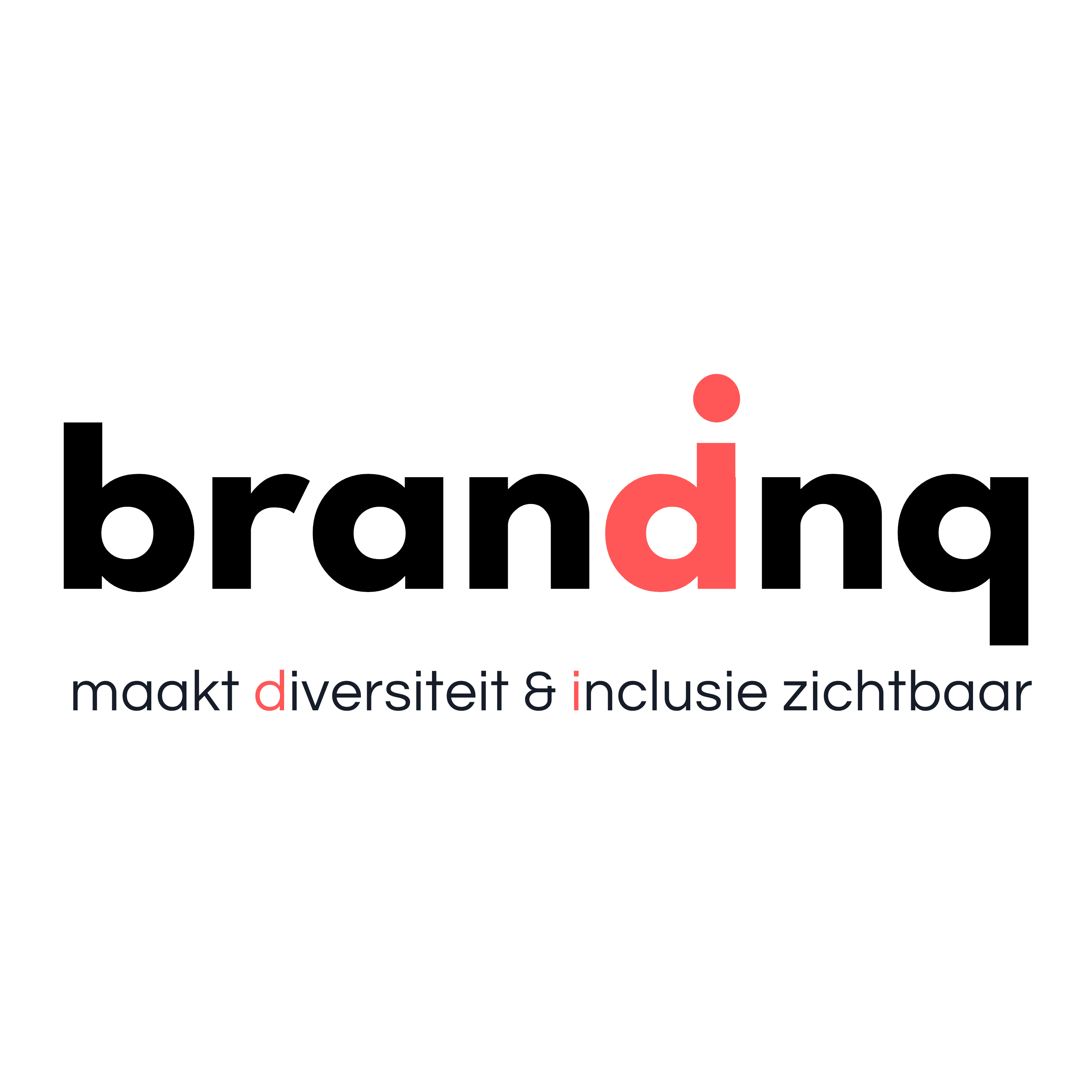5 Core Components of Workplace Diversity Training

Fitting in is a wonderful feeling. The satisfaction and safety that accompany work in a diverse environment can profoundly affect your employees’ well-being—and contribute to cohesion that drives successful business outcomes.
With the right DEI training concepts, learner tools, and practices in place, companies can initiate lasting changes in the culture and systems that boost employee satisfaction, build skills and confidence, and create a better workplace for all.
Learn more about the basics of designing diversity training, common training elements to consider, and ways to boost learner engagement with your DEI content.
5 Core Components of Diversity Training
Success in diversity training comes from a combination of stakeholder education, skills development, and positive change. The key facets of DEI training listed below help teams make better decisions and cultivate their talent:
1. Set Goals
Understanding why you’re doing training and what you want the outcome to be is foundational in building effective training. Outline your needs and objectives using tools and information at hand, such as current internal data, employee feedback (especially from underrepresented groups), and organizational goals.
2. Awareness Building
Awareness-building helps employees engage with the different dimensions of diversity. Building recognition and appreciation for differences in culture, ethnicity, gender, sexual orientation, ability, and a range of other dimensions is an important step to celebrating and supporting every colleague.
3. Skill Development
Awareness building alone is not enough—in fact, it can be detrimental if it’s not accompanied by motivation to change and skills that help bring that change to life. Equipping your employees and leaders with practical tools and techniques that translate training into action is critical.
4. Behavioral Change
Behavioral change catalyzed by diversity training when employees adopt new attitudes and actions is the ultimate goal. To understand if your training is effective, it’s important to measure the resulting behavior change. One way to do this is with pre- and post- training measurement—take a look at the measurable impact Paradigm’s training made for over 500 companies in 2023.
5. Data Analysis

Paradigm Blueprint analyzes your organization’s DEI maturity to help you spot growth opportunities (Source)
Ultimately, you want to connect the impact of your training to larger goals. For example, if you institute training designed to close diversity gaps in hiring, you want to see if hiring outcomes change. This analysis also helps you further refine your program to deliver the most benefit to your teams.
10 Types of Diversity Training
Diversity, by nature, considers many angles. While all diversity efforts are vital to the function and success of organizations, they vary widely between organizations.
Based on the challenges facing your organization, the following training types may benefit your organizational goals:
1. Belonging Training
Building an inclusive culture is easier when everyone has a common understanding of the elements that make everyone feel welcome. Belonging training gives employees the knowledge and frameworks to see and promote practices of belonging within the organization.
2. Managing Bias
Unconscious bias training equips individuals to better identify and avoid inherent or implicit bias. Recognizing how our background, culture, and social experiences may influence decision-making helps individuals create a fair, inclusive workplace.
3. Inclusive Leadership
Leaders with the right tools build teams with the best contributors. Inclusive leadership training gives executives the skills to recruit and effectively manage diverse teams.
4. Bystander Intervention
Knowledge is powerful, but action can be world-changing. Intervention training gives individuals the tactics and resources needed to step up in the moment and intervene on behalf of others.
5. Disability Inclusion
Diverse environments support the perspectives and accommodations of those team members with disabilities. Effective disability awareness training generates awareness around the realities of visible and invisible disability and provides practical advice on creating accessible, inclusive environments.
6. Harassment Training
Harassment training helps everyone maintain a safe and respectful workplace, educating employees about inappropriate behavior and its impacts. The training makes employees aware of subtle and overt forms of harassment and outlines reporting procedures.
7. LGBTQIA+ Allyship
LGBTQIA+ allyship training helps employees understand issues, terminology, and workplace concerns facing LGBTQIA+ colleagues. These trainings give employees tools and resources to foster a safe and welcoming environment.
8. Inclusive Culture
Inclusivity training is designed to raise awareness of inclusive behaviors, language, and practices. These sessions focus on understanding diverse backgrounds and teaching strategies for inclusive culture, communication, and action.
9. Responding to Microaggressions
Microaggression training helps employees and leaders recognize subtle, often unintentional, acts of discrimination. Through scenarios and discussions, participants learn the impact of microaggressions on colleagues and strategies to perceive and avoid unintentional discrimination. It can also give those who experience microaggressions strategies for navigating the moment.
10. Anti-racism
Knowledge about the structures and dynamics of racism helps teams dismantle inequitable systems. Anti-racism training encourages active engagement in identifying, challenging, and changing systemic racism within organizations. This training empowers individuals to become allies and advocates for racial justice.
Why Diversity Training Is So Valuable
DEI isn’t just a buzzword. When brands commit to diversity, equity, and inclusion, their key stakeholders take notice and their business benefits.
Intentional diversity efforts create rich, innovative, and dynamic workplace cultures that attract top talent and lead to lasting business outcomes. Companies and teams gain access to broader perspectives and experiences, as well as more creative and collaborative employee engagement.
Diversity Drives Innovation
Diversity initiatives unlock the potential for groundbreaking ideas and solutions, giving people the confidence to take chances and share new ideas. By welcoming varied perspectives, backgrounds, and experiences, companies create the conditions for innovation, leading to better problem-solving and outside-the-box thinking.
Engagement Thrives in Diverse Environments
Employees in diversity-positive environments connect with their colleagues and mission more deeply than in less diverse settings. When Greenhouse partnered with us to better support its customer service employees, it put the power of engagement into action.
Co-workers who feel like they belong also feel responsible for their colleagues, encouraging everyone to bring their best to the mission. Companies that prioritize this diversity experience increase collaboration, productivity, and employee retention.
Employees Stay When They Feel Seen
An inclusive environment is a nexus for talent. Companies with a strong reputation for DEI attract individuals from various backgrounds looking to work in inclusive workplaces. Airbnb used its existing diversity data to create a better environment for women. As a result, women’s representation and retention within the company grew.
Inclusive teams can attract a broader range of skills and ideas and create a culture that encourages employee retention. Implementing DEI in the workplace makes every aspect of talent management and recruitment easier.
Customers and Workers Respond to Values-driven Brands
Values-driven brands resonate deeply with clients and candidates alike. Brands that champion diversity initiatives often drive three specific, positive outcomes from their DEI efforts:
- DEI-focused companies raise awareness about issues affecting team members.
- Diversity-focused leaders motivate their diverse workforce toward better business and interpersonal experiences.
- Diversity programs promote an environment that encourages positive behavior change.
Employees and customers gravitate toward these companies, drawn by the outward evidence of organizational change.
How to Make Workplace Diversity Training Engaging
With so much on people’s plates, the idea of “yet another” training may seem daunting to your employees. But there are ways to share the enthusiasm over diversity issues and plenty of options for your employees to engage on their own terms:
Seek Champions to Promote DEI Work
Having someone in your corner boosts the chance of success, especially when advocating for change. Identify a champion that excites others to engage with DEI content and support positive change.
The enthusiasm an internal champion brings to the workplace can inspire others to embrace DEI initiatives and incorporate diverse practices into their role.
Design DEI Programs for Organizational Needs
Well-aligned DEI programs resonate with employees because they address the specific needs and challenges felt within their organization. When training content is relevant and actionable, it helps team members see the connection between diversity practices and their daily experiences.
Offer Various Formats for Learning
Offering diverse learning formats, from on-demand video to in-person presentations, caters to the unique styles of individual learners.
People absorb information differently—some thrive through visual stimulation, while others prefer direct interaction or auditory learning. Building variety into a DEI program ensures all team members can engage with the content in the way that suits them best.
Approach DEI Training with a Growth Mindset
The growth mindset is gaining popularity across academia and corporate enrichment settings. The central idea—that challenges are development opportunities rather than obstacles—motivates individuals to fully engage with training material. Learners remain open to new ideas and evolve their understanding of DEI concepts and training courses.
Solicit Feedback and Interaction
If you want to know how people perceive your diversity training, in most cases, all you have to do is ask. Soliciting employee feedback is one of the best ways to understand your employees’ experience and identify their needs. Paradigm’s employee survey makes this process easy and empowers companies to integrate findings directly into diversity efforts.
Trainers can use employee feedback to tailor content to their audience’s needs, interests, and learning styles. This personalized approach keeps topics relevant and resonates with participants.
How to Find the Right Diversity Training Program for Your Workplace
Choosing the right diversity training program is nearly as important as choosing the best team members for your office. The features and benefits of specific programs should closely align with your organization’s goals, structure, and maturity.
Consider these qualities when selecting a diversity training program:
Goals-oriented
A goals-focused diversity training program empowers organizations with clear, achievable objectives that align with their core values and mission. This structured approach ensures that every aspect of the training is purpose-driven toward creating a more inclusive and equitable workplace environment.
A strong program also provides ways to measure the impact of those goals. Paradigm’s comprehensive analytics toolkit surfaces impactful data for better goal development.
Research-backed
The best diversity training programs stem from a foundation of extensive research to ensure they are effective and lasting.
Research-based methodologies can also connect their strategies to real-world scenarios. This approach guarantees that training is relevant, up-to-date, and capable of fostering change.
Flexible
Part of creating a successful learning environment lies in addressing the many ways people learn. A flexible, blended learning approach allows employees to engage with content on their own time and on their own terms.
Customized
A step beyond flexibility, a customizable approach allows trainers to address specific challenges and opportunities within their organization. To be effective, training has to resonate with the team or company. Select an option that provides tailored content reflecting diverse experiences and challenges.
Agile customization provides the core educational experience while acknowledging individual company challenges and driving meaningful internal change.
Collaborative
A collaborative DEI program actively seeks and values employee feedback. This ensures that initiatives reflect actual needs and that employees can participate, respond, and feel connected to the process.
By prioritizing dialogue, training programs cultivate an environment where diverse perspectives are not only heard but acted upon.
Partner with Paradigm to Build Successful Diversity Training Programs
Building the best structure for diversity education is an important component of your project outcome. Find a strategy partner that can help you identify concerns, provide a roadmap for effective training and its practical applications, and collaborate with your stakeholders to achieve results.
Paradigm leads the way in building multi-faceted, well-tailored diversity training programs to meet the needs of organizations from 10 employees to 10,000. If you’re interested in building more diversity and inclusion within your company, learn more about our training approach today.
November 22, 2024
If you’re interested in more information about diversity training, contact us today!








